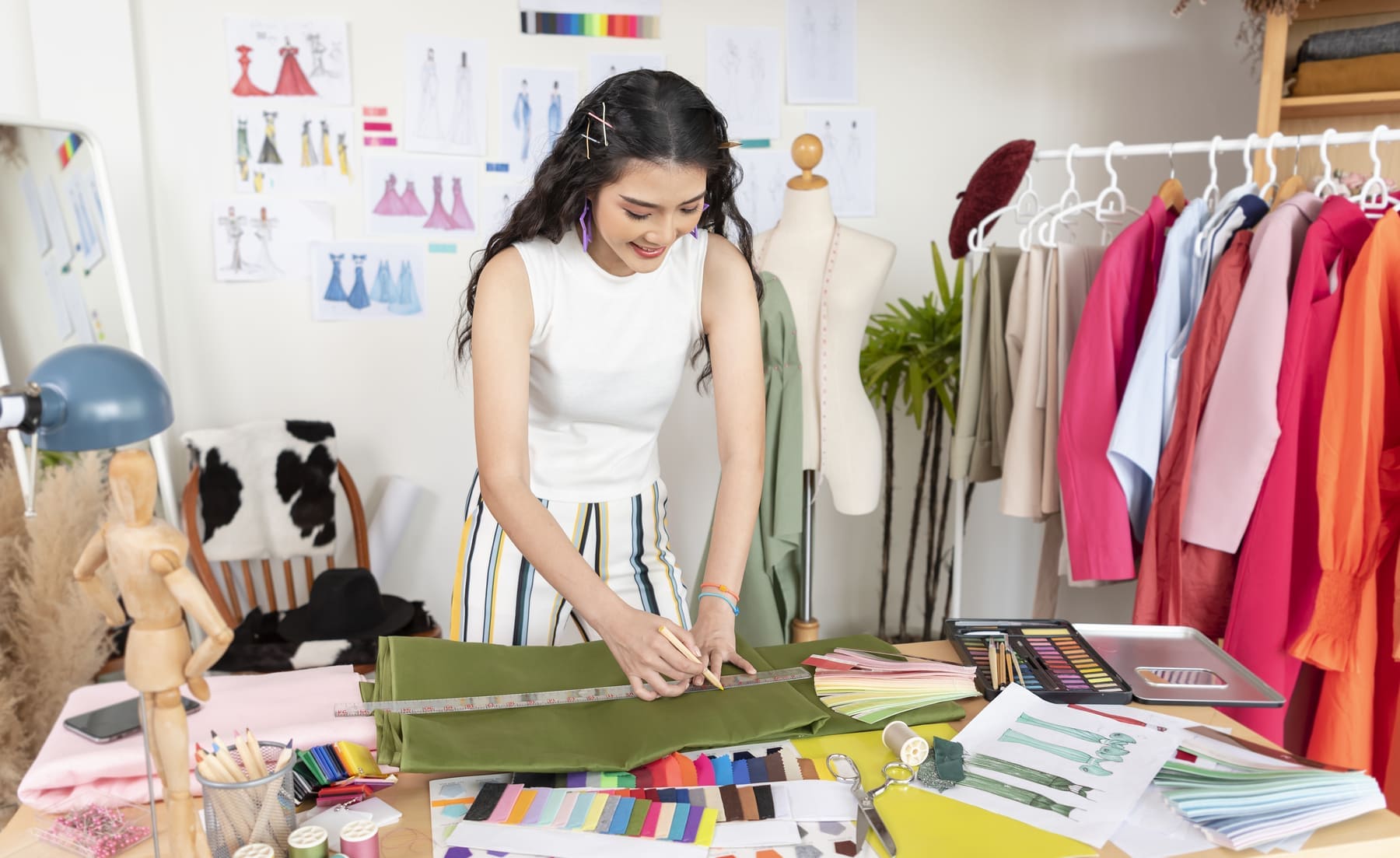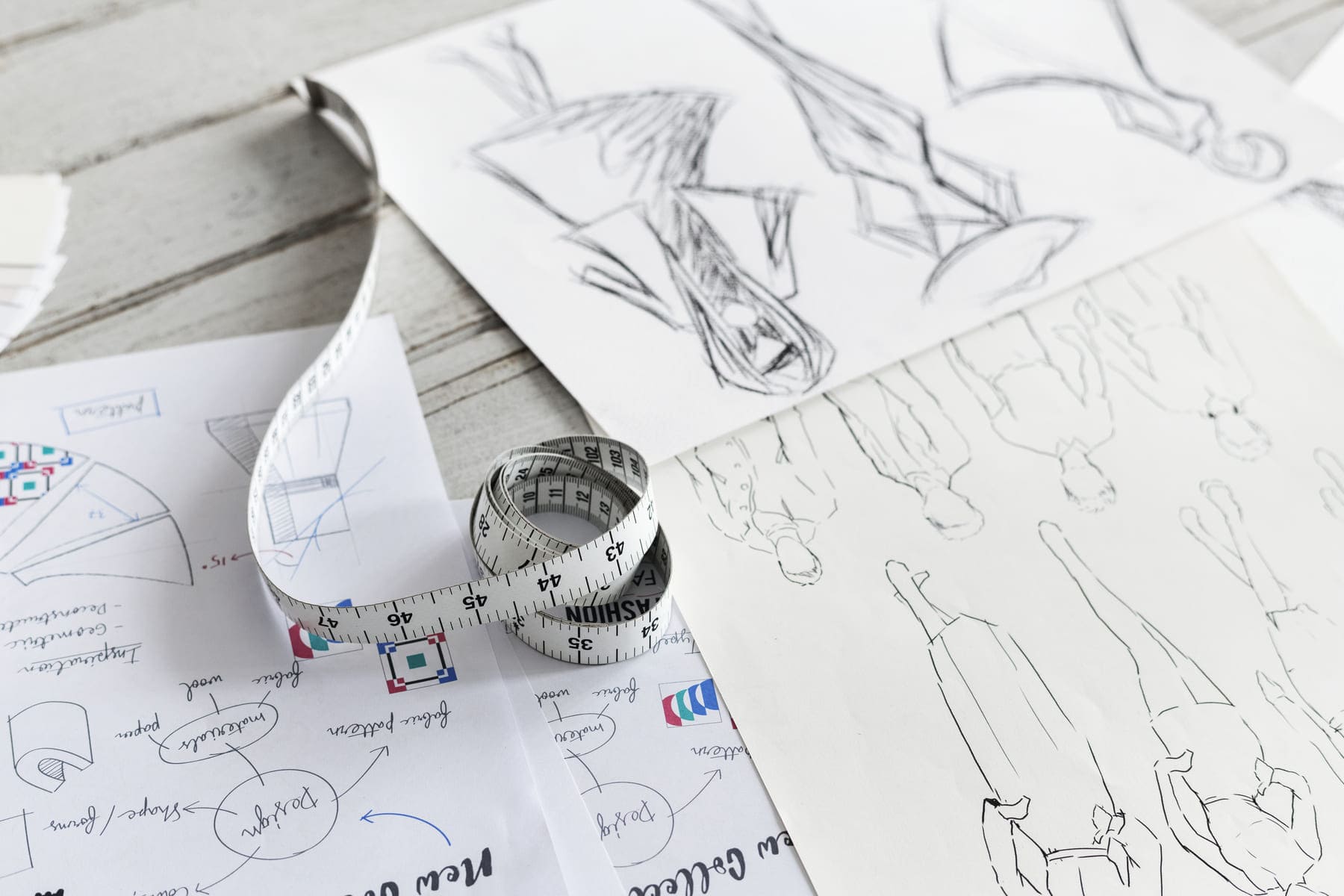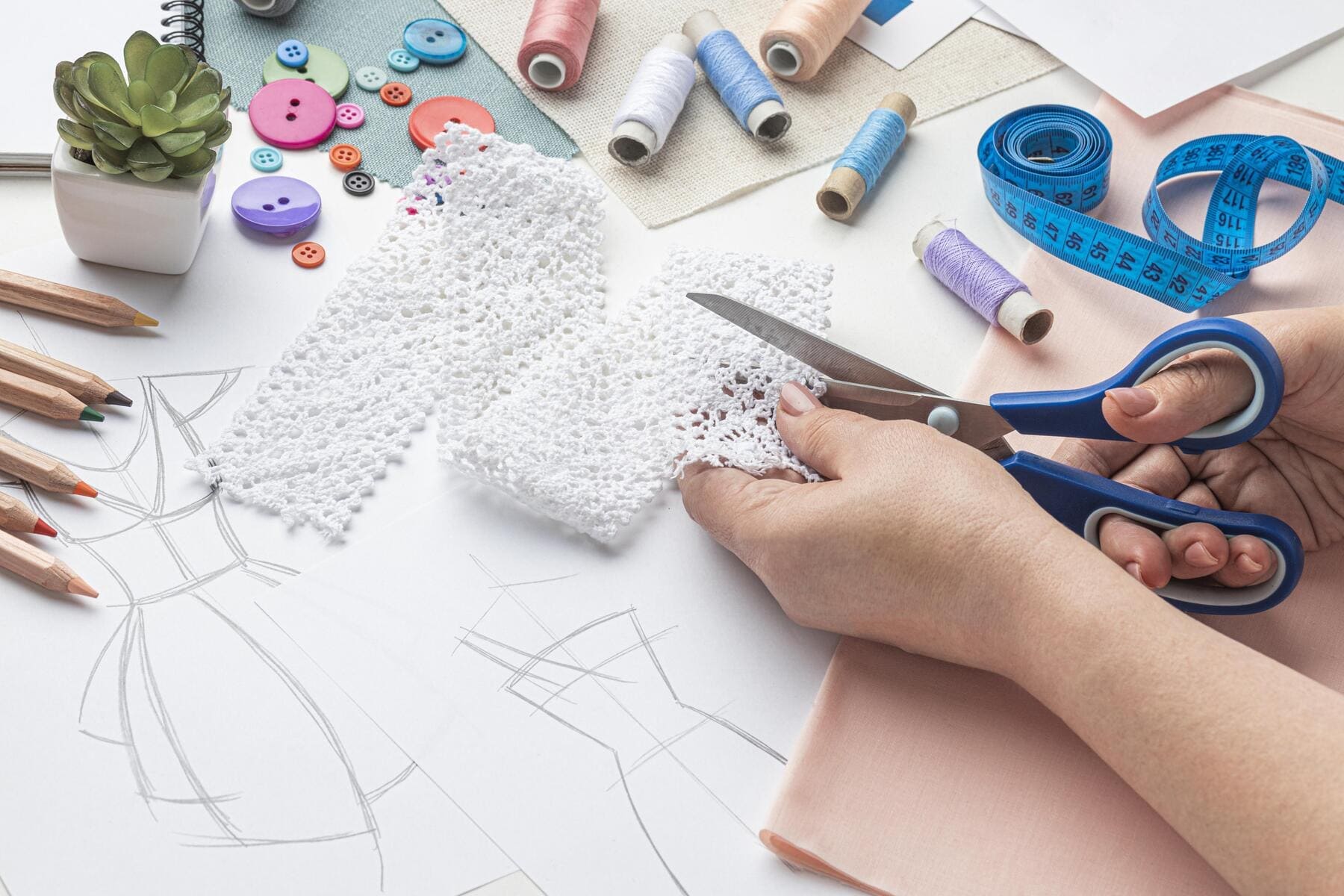Fashion design is a creative and exciting field that combines art, technology, and business to create beautiful clothing and accessories. If you're interested in becoming a fashion designer, it's important to understand the steps you'll need to take to make your dream a reality. This guide will provide an overview of the key steps involved in becoming a fashion designer, including education, internships, and building a portfolio.
How to become a fashion designer
 Fashion design is a very competitive industry.[/caption]
Fashion design is a very competitive industry.[/caption]
- Step 1: Get an Education in Fashion Design
The first step in becoming a fashion designer is to get an education in fashion design. Many universities and colleges offer fashion design programs that cover the various aspects of the industry, including pattern making, textiles, and fashion history. Look for schools that offer hands-on experience and opportunities to work on real-world projects. You can also consider online or vocational schools if you prefer a more flexible schedule.
- Step 2: Build a Portfolio
A strong portfolio is an essential tool for any aspiring fashion designer. Your portfolio should showcase your best work and demonstrate your skills and creativity. Your portfolio should include sketches, illustrations, and photographs of your designs, as well as any finished garments or accessories. You can also include any fashion-related projects you've worked on, such as styling or visual merchandising.
- Step 3: Get an Internship
An internship is a great way to gain hands-on experience and make connections in the fashion industry. Many fashion design programs require students to complete an internship as part of their curriculum, but you can also seek out internships on your own. Look for internships with established designers, fashion houses, or retail companies to gain a broad understanding of the industry.
- Step 4: Network
Networking is an important part of any career, and fashion design is no exception. Attend fashion shows, events, and trade shows to meet other designers and industry professionals. Join professional organizations like the Council of Fashion Designers of America to stay up-to-date on the latest industry trends and make connections.
- Step 5: Start Your Own Line
Once you've gained experience and developed your skills, you may want to consider starting your own fashion line. This can be a challenging and risky venture, but it can also be incredibly rewarding. Starting your own line will require you to learn about business, marketing, and manufacturing, as well as design.
What does a fashion designer do?
A fashion designer is responsible for creating new clothing and accessory designs. This includes researching current fashion trends and developing new ideas, sketching designs, creating patterns and samples, and selecting fabrics and materials. Fashion designers also work with production teams to bring their designs to life and may also be involved in marketing and promoting their designs. They may also work with other designers, buyers, and manufacturers to create clothing and accessories that meet the needs of specific consumers.
Key Fashion Designer Skills
 Fashion design skills encompass mechanical, technical, business, and interpersonal skills.[/caption]
Fashion design skills encompass mechanical, technical, business, and interpersonal skills.[/caption]
- Creativity and imagination:
A fashion designer must have a unique and creative perspective to be able to design clothing and accessories that stand out in the market. They must be able to think outside the box and come up with new and exciting ideas for their designs.
- An eye for color, texture, and detail:
A fashion designer must have a keen sense of aesthetics and an ability to combine different colors, fabrics, and textures to create visually appealing designs. They must be able to pay attention to every small detail in their designs to make sure that everything is perfect.
- Understanding of current fashion trends:
A fashion designer must stay current with the latest fashion trends in order to create designs that are relevant and in demand. They must be able to predict future trends and adapt their designs accordingly.
- Sketching and drawing abilities:
Fashion designers must have the ability to sketch and illustrate their designs in order to communicate their ideas to others. They must have good technical drawing skills and be able to create detailed and accurate illustrations of their designs.
- Knowledge of textile and fabric properties:
A fashion designer must have a good understanding of the properties of different textiles and fabrics, such as draping, stretch, and durability. They must be able to choose the right fabrics and materials for their designs in order to create garments that are functional and comfortable to wear.
- Knowledge of pattern making and garment construction:
A fashion designer must have a good understanding of how clothes are made and be able to create patterns and samples of their designs. They must be able to think about the technical aspects of clothing construction and ensure that their arrangements can be easily made into garments.
- Strong organizational and project management skills:
A fashion designer must be able to manage multiple projects at once and meet deadlines. They must be able to work efficiently and effectively to ensure that their designs are completed on time.
- Business acumen and an understanding of the fashion industry:
A fashion designer must be able to navigate the business side of the fashion industry, including understanding production costs and marketing strategies. They must be able to understand the needs of their target audience and create designs that will appeal to them.
Average Salary of a Fashion Designer
The average salary of a fashion designer varies depending on the designer's experience, location, and employer. According to the Bureau of Labor Statistics, the median annual salary for fashion designers in the United States is U$73,790 and in Australia is A$68,336. Entry-level fashion designers typically earn less, while more experienced designers may earn significantly more. Additionally, the salary can vary greatly depending on the type of employer. For example, a designer working for a large fashion house may earn more than a designer working for a small independent designer. It's important to note that the fashion industry is a very competitive field, and many aspiring designers may not be able to make a living solely from their design work. Many designers work freelance or work part-time in other jobs while building their design careers. It's also important to remember that starting a fashion business can be costly, and many designers may face financial challenges in building a sustainable business. However, becoming a fashion designer is not an easy task, you will be facing many challenges along the way. The fashion industry is highly competitive, and designers must constantly stay on top of new trends, styles, and technologies. Additionally, the industry can also be affected by economic downturns, and fashion designers must be able to adapt to changing market conditions.
20 Jobs in the Fashion Industry
 Jobs in the fashion industry.[/caption] The fashion industry is a vast and diverse field that encompasses the design, production, marketing, and sale of clothing, footwear, and accessories. It is a global enterprise that employs a wide range of people with different skills and interests. Whether you are interested in creative design, business management, or something in between, there are many jobs within the fashion industry that are both interesting and rewarding. One does not have to be a model or designer to begin a career in fashion, there are many other roles and opportunities available.
Jobs in the fashion industry.[/caption] The fashion industry is a vast and diverse field that encompasses the design, production, marketing, and sale of clothing, footwear, and accessories. It is a global enterprise that employs a wide range of people with different skills and interests. Whether you are interested in creative design, business management, or something in between, there are many jobs within the fashion industry that are both interesting and rewarding. One does not have to be a model or designer to begin a career in fashion, there are many other roles and opportunities available.
Here are 20 examples of jobs in the fashion industry:
- Fashion Designer: Creates new clothing and accessory designs
- Textile Designer: Designs fabrics, prints, and patterns
- Apparel Production Manager: Oversees the production of clothing and accessories
- Fashion Stylist: Selects clothing and accessories for photoshoots, editorials, and events
- Fashion Illustrator: Illustrates clothing and accessory designs
- Fashion Photographer: Takes photographs of clothing and accessories for advertising, editorial, and e-commerce purposes
- Fashion Buyer: Selects clothing and accessories for retail stores and online shops
- Visual Merchandiser: Creates visually appealing displays for clothing and accessories in retail stores
- Fashion Market Editor: Researches and selects clothing and accessories for fashion editorial and e-commerce
- Fashion Publicist: Promotes clothing and accessory designers and brands to the media
- Fashion Journalist: Writes about fashion trends, designers, and brands for magazines, newspapers, and online publications
- Fashion Show Producer: Produces fashion shows and events
- Fashion Retail Manager: Oversees the operations of a fashion retail store
- Fashion E-commerce Manager: Oversees the online sales and marketing of clothing and accessories
- Fashion Marketing Manager: Develops and implements marketing strategies for clothing and accessory brands
- Fashion Social Media Manager: Develops and manages social media campaigns for clothing and accessory brands
- Fashion Creative Director: Oversees the creative direction of a clothing or accessory brand
- Fashion Event Planner: Organizes and manages fashion-related events such as fashion shows, store openings, and product launches
- Fashion Consultant: Advises clothing and accessory brands on design, production, marketing, and distribution
- Fashion Educator: Teaches fashion design, production, history, and business in universities and colleges.
See more: In-Demand Jobs of the Decade and How to Position Yourself for Success
Final Word
In summary, the fashion industry offers a vast array of career opportunities for those passionate about fashion. Becoming a fashion designer requires creativity, business acumen, and hard work. Pursuing a career in fashion design involves key steps such as education, networking, and creating a portfolio. A successful fashion design career requires hard work, creativity, and persistence. Building a strong foundation through education, internships, and networking can help you achieve your goals as a fashion designer. It's important to be patient, persistent, and creative throughout the journey towards this goal. While this list is not exhaustive, it provides a glimpse into the wide range of roles available in the fashion industry, and we hope it helps aspiring fashion designers navigate this exciting field. Hashtag: #FashionDesignerCareer